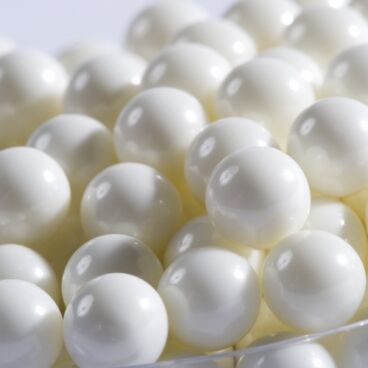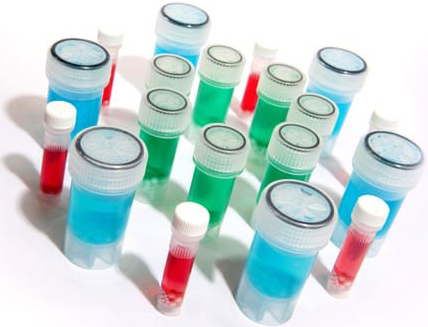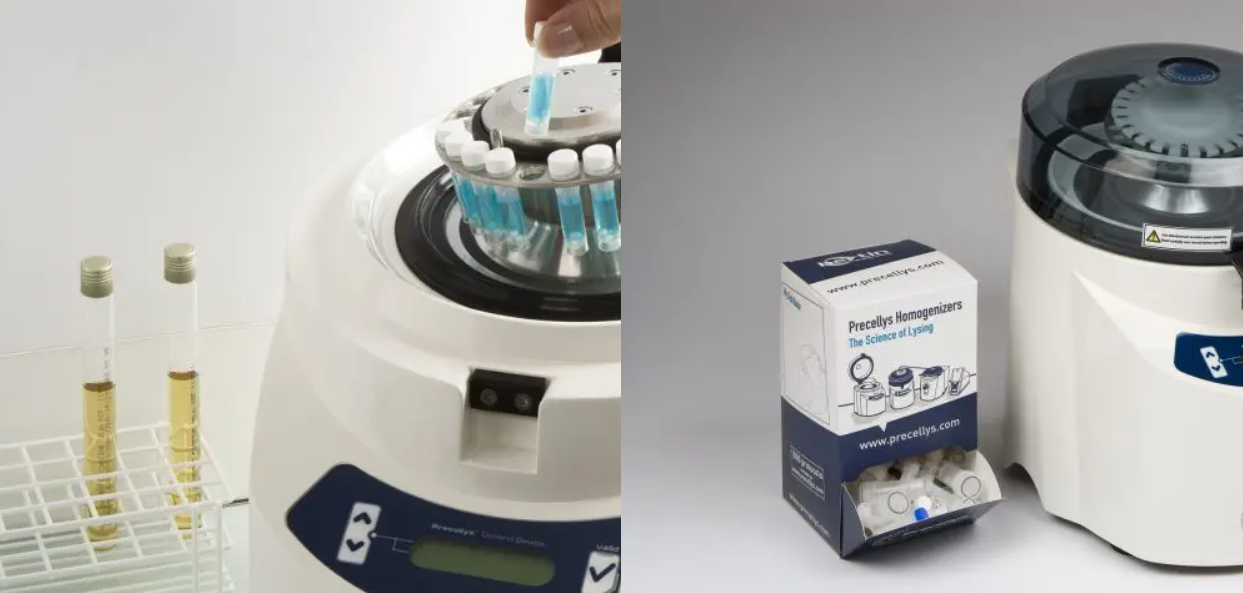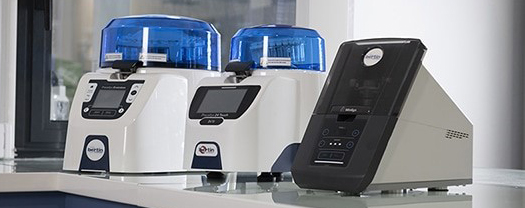Sample homogenisation is an important step in the preparation of biological samples for a variety of applications, including the analysis of proteins, DNA, RNA and other molecules. Homogenisation is the process of mechanically breaking up cells or tissues and releasing the molecules they contain. The use of beads is a commonly used method for homogenising samples.
Different types of beads
 Beads are small spheres made of different materials such as glass, ceramic or metal, usually between 0.1 and 5 mm in size. Beads can be made in different sizes and shapes and have different surface textures. Beads are usually shaken at high frequency together with a sample in a vessel to homogenise the sample. The beads break the cells or tissue by friction and shear forces and release the contained molecules.
Beads are small spheres made of different materials such as glass, ceramic or metal, usually between 0.1 and 5 mm in size. Beads can be made in different sizes and shapes and have different surface textures. Beads are usually shaken at high frequency together with a sample in a vessel to homogenise the sample. The beads break the cells or tissue by friction and shear forces and release the contained molecules.
The choice of beads depends on the type of sample to be homogenised. Beads made of glass or ceramic are usually suitable for homogenising soft tissue or cells, while beads made of metal can be used for homogenising hard or tough samples such as bones or teeth. The size and shape of the beads also influence the effectiveness of homogenisation. Smaller beads produce higher shear forces and are therefore more effective in homogenising samples, while larger beads can be used for homogenising larger tissue samples or for purifying proteins from cell lysate.
Many application possibilities with different sample materials
The bead homogenisation method is suitable for a wide range of samples, including tissues, cells and microorganisms. Some examples of bead homogenisation applications are the extraction of DNA or RNA from cells or tissues, the isolation and analysis of proteins or metabolites in microbial samples.
Our homogenisers from Bertin Instruments are 3D high-speed homogenisers used for sample preparation. Bertin homogenisers are also known as Precellys, a brand introduced by Bertin Technologies, a French company, more than 15 years ago.
Precellys devices can be used to homogenise any biological sample, whether animal, human or plant, and regardless of whether the tissue is hard or soft. Due to the multidirectional movement of the beads, 3D bead homogenisation is the most efficient and reproducible method compared to classical methods (mortar and pestle, ultrasound, mixers, high pressure homogenisers). The speed can be set up to 10,000 rpm. Precellys® Evolution allows you to use six different tube volumes (from 0.3 to 15 ml) and prepare between 1 and 96 tubes at the same time.
In fields as diverse as pharmacology, medical research, forensics, environmental research, microbiology or agricultural science, the Precellys® Evolution saves valuable time in routine and R&D projects that require tissue homogenisation or cell disruption. This pre-treatment is crucial for the extraction of proteins, drugs, metabolites, RNA or DNA.
White paper tough sample grinding in molecular biology
Precellys lysing kits: fail-safe versatility
 Precellys lysing kits are made of ceramic, glass, stainless steel or garnet, and are fabricated from high-quality materials. This, along with the different tube sizes available (0.3, 0.5, 2, 7 and 15 ml), provides great versatility for tissue homogenization. Over all, Bertin Instruments offers more than 30 different lysing matrices! The variety of Precellys lysing kits means that there is always a suitable solution for the homogenization of human, animal and plant tissues as well as microorganisms. Therefore, optimized homogenization reduces the processing time of the samples and consequently preserves the molecules of interest as much as possible while also ensuring an optimal recovered quantity. Choosing the right lysing kit for the tissue to be ground also limits the heating of the sample.
Precellys lysing kits are made of ceramic, glass, stainless steel or garnet, and are fabricated from high-quality materials. This, along with the different tube sizes available (0.3, 0.5, 2, 7 and 15 ml), provides great versatility for tissue homogenization. Over all, Bertin Instruments offers more than 30 different lysing matrices! The variety of Precellys lysing kits means that there is always a suitable solution for the homogenization of human, animal and plant tissues as well as microorganisms. Therefore, optimized homogenization reduces the processing time of the samples and consequently preserves the molecules of interest as much as possible while also ensuring an optimal recovered quantity. Choosing the right lysing kit for the tissue to be ground also limits the heating of the sample.

 Deutsch
Deutsch






